Description
CHAPTER 1: BASIC CONCEPTS ABOUT MATTER
MULTIPLE CHOICE
1) Which of the following is a property of both gases and liquids?
a) definite shape c) definite volume
b) indefinite shape d) indefinite volume
ANS: B DIF: Easy KEY: Chemistry | general chemistry | phases
NOT: Section 1.2
2) In which of the following pairs of properties are both properties chemical properties?
a) freezes at 10?C and nonflammable
b) decomposes at 500?C and reacts with bromine
c) poor conductor of heat and is reddish brown in color
d) has a low density and is very hard
ANS: B DIF: Moderate
KEY: Chemistry | general chemistry | general concepts | properties |chemical
NOT: Section 1.3
3) When a substance undergoes a chemical change it is always true that
a) it liquifies
b) it changes from a solid to a gas
c) it is converted to a new kind of matter with a different composition
d) the temperature of the substance increases
ANS: C DIF: Moderate
KEY: Chemistry | general chemistry | general concepts | chemical change
NOT: Section 1.4
4) The description “two substances present, two phases present” is correct for
a) heterogeneous mixtures c) elements
b) homogeneous mixtures d) compounds
ANS: A DIF: Moderate
KEY: Chemistry | general chemistry | general concepts | mixtures
NOT: Section 1.5
5) Which of the following statements about heterogeneous and homogeneous mixtures is correct?
a) It is possible to have heterogeneous mixtures in which all the components are liquids.
b) A homogeneous mixture contains visibly different parts, or phases.
c) All of the phases in a heterogeneous mixture must be in the same state.
d) No two phases in a heterogeneous mixture can be in the same state.
ANS: A DIF: Moderate KEY: Chemistry | general chemistry | mixtures
NOT: Section 1.5
6) Which of the following statements is correct?
a) Elements, but not compounds, are pure substances.
b) Compounds, but not elements, are pure substances.
c) Both elements and compounds are pure substances.
d) Neither elements nor compounds are pure substances.
ANS: C DIF: Moderate
KEY: Chemistry | general chemistry | general concepts | pure substances
NOT: Section 1.6
7) An element is a substance that
a) can be broken down into simpler substances by physical means.
b) cannot be broken down into simpler substances by physical means.
c) can be broken down into simpler substances by chemical means.
d) cannot be broken down into simpler substances by chemical or physical means.
ANS: D DIF: Easy
KEY: Chemistry | general chemistry | general concepts | element
NOT: Section 1.6
8) A pure substance F is found to change upon heating into two new pure substances M and Y. Both M and Y may be decomposed by chemical means. From this we may conclude that:
a) F is an element, M and Y are compounds.
b) F is a compound, M and Y are elements.
c) F, M and Y are all elements.
d) F, M and Y are all compounds.
ANS: D DIF: Difficult
KEY: Chemistry | general chemistry | general concepts | compound; element; mixtures
NOT: Section 1.5| Section 1.6
9) Which of the following statements concerning the known elements is correct?
a) No new elements have been identified within the last 40 years.
b) Most elements occur naturally.
c) 108 elements are known at present
d) Scientists have synthesized all possible non-natural elements.
ANS: B DIF: Easy KEY: Chemistry | general chemistry | elements
NOT: Section 1.7
10) The most abundant elements in the universe and the Earth’s crust are, respectively,
a) oxygen and iron. c) helium and carbon.
b) hydrogen and helium. d) hydrogen and oxygen.
ANS: D DIF: Moderate
KEY: Chemistry | general chemistry | general concepts | element
NOT: Section 1.7
11) In which of the following sequences of elements does each of the elements have a two-letter chemical symbol?
a) barium, iron, nitrogen c) silicon, zinc, hydrogen
b) selenium, nickel, strontium d) iodine, xenon, titantium
ANS: B DIF: Easy
KEY: Chemistry | general chemistry | general concepts | element |nomenclature
NOT: Section 1.8
12) In which of the following sequences of elements does each of the elements have a one-letter chemical symbol?
a) indium, carbon, silver c) antimony, boron, nitrogen
b) iodine, boron, tungsten d) nitrogen, germanium, bromine
ANS: B DIF: Easy
KEY: Chemistry | general chemistry | general concepts |element
NOT: Section 1.8
13) Which one of the following statements about atoms is incorrect?
a) An atom is the smallest “piece” of an element that can exist and still have the properties of the element.
b) Free isolated atoms are rarely encountered in nature.
c) Atoms may be decomposed using chemical change.
d) Only one kind of atom may be present in a homoatomic molecule.
ANS: C DIF: Moderate KEY: Chemistry | general chemistry | atoms
NOT: Section 1.9
14) Which one of the following statements about heteroatomic molecules is correct?
a) No two atoms in a heteroatomic molecule may be the same.
b) Upon chemical subdivision, heteroatomic molecules always yield two or more kinds of atoms.
c) Heteroatomic molecules maintain the properties of their constituent elements.
d) Molecules of certain elements are heteroatomic.
ANS: B DIF: Moderate KEY: Chemistry | general chemistry | molecules
NOT: Section 1.9
15) Which of the following pairings of chemical formulas and “molecular descriptions” is incorrect?
a) LiCN and “triatomic” c) N2 and “homoatomic”
b) KCl and “heteroatomic” d) SiO2 and “diatomic”
ANS: D DIF: Moderate KEY: Chemistry | general chemistry | molecules
NOT: Section 1.9
16) In which of the following pairs of chemical formulas do both formulas represent compounds?
a) O2 and O3 c) HCN and N2
b) CO2 and O2 d) N2O4 and NO2
ANS: D DIF: Easy KEY: Chemistry | general chemistry | chemical formulas
NOT: Section 1.10
17) Which of the following is a correct description for a sample of ice cubes in water?
a) one phase present, one substance present
b) one phase present, two substances present
c) two phases present, one substance present
d) two phases present, two substances present
ANS: C DIF: Moderate
KEY: Chemistry | general chemistry | general concepts | compound; element; mixtures
NOT: Section 1.5
18) Consider the chemical formulas CoI2 and COI2. It is true that they
a) contain identical kinds of atoms
b) identify the same compound
c) contain different kinds and numbers of atoms
d) can be described by none of the above
ANS: C DIF: Moderate KEY: Chemistry | general chemistry | chemical formulas
NOT: Section 1.10
19) In which of the following pairs of chemical formulas do the two members of the pair contain the same number of elements as well as the same number of atoms?
a) Cs and CS c) CoCl2 and CoCl3
b) CoBr2 and COBr2 d) NH4Br and NiSO4
ANS: D DIF: Moderate KEY: Chemistry | general chemistry | chemical formulas
NOT: Section 1.10
20) The total number of atoms present in one formula unit of Co2(SO4)3 is
a) 14 c) 16
b) 15 d) 17
ANS: D DIF: Moderate KEY: Chemistry | general chemistry | chemical formulas
NOT: Section 1.10
21) Which of the following is a property of both the liquid state and the solid state?
a) a definite shape
b) an indefinite volume
c) an indefinite shape and a definite volume
d) more than one correct response
e) no correct response
ANS: E DIF: Easy KEY: Chemistry | general chemistry | phases
NOT: Section 1.2
22) In which of the following pairs of properties are both properties physical properties?
a) melts at 73?C, decomposes upon heating
b) good reflector of light, blue in color
c) has a high density, is very hard
d) more than one correct response
e) no correct response
ANS: D DIF: Moderate
KEY: Chemistry | general chemistry | general concepts | properties
NOT: Section 1.3
23) Which of the following changes is a chemical change?
a) melting of ice
b) pulverizing of hard sugar cubes
c) rusting of iron
d) more than one correct response
e) no correct response
ANS: C DIF: Moderate
KEY: Chemistry | general chemistry | general concepts | chemical change
NOT: Section 1.4
24) The description “two substances present, two phases present” is correct for
a) a mixture of ice and water
b) a mixture of oil and water
c) a mixture of milk and water
d) more than one correct response
e) no correct response
ANS: B DIF: Moderate
KEY: Chemistry | general chemistry | general concepts | mixtures
NOT: Section 1.5
25) Which of the following statements concerning mixtures is correct?
a) The composition of a homogeneous mixture cannot vary.
b) A homogeneous mixture can have components present in two physical states.
c) A heterogeneous mixture containing only one phase is an impossibility.
d) More than one correct response
e) No correct response
ANS: C DIF: Moderate
KEY: Chemistry | general chemistry | general concepts | mixtures
NOT: Section 1.5
26) Which of the following statements concerning pure substances is correct?
a) Elements, but not compounds, are pure substances.
b) A pure substance can never be separated into simpler pure substances using chemical means.
c) Pure substances cannot have a variable composition.
d) more than one correct response
e) no correct response
ANS: C DIF: Moderate
KEY: Chemistry | general chemistry | general concepts | pure substances
NOT: Section 1.6
27) A substance that cannot be separated into two or more substances using physical means
a) must be an element.
b) could be a compound.
c) must be a pure substance.
d) more than one correct response
e) no correct response
ANS: D DIF: Easy
KEY: Chemistry | general chemistry | general concepts | compound
NOT: Section 1.6
28) When substance A reacts with substance B, a new substance C is formed. Based on this information
a) Both A and B are elements.
b) B could be a compound.
c) C must be a compound.
d) More than one correct response.
e) No correct response.
ANS: D DIF: Moderate
KEY: Chemistry | general chemistry | general concepts | compound; element
NOT: Section 1.6
29) Which of the following statements about compounds and mixtures is correct?
a) Both mixtures and compounds must contain two or more kinds of atoms.
b) Mixtures must always contain at least one compound.
c) Both mixtures and compounds can have a variable composition.
d) More than one correct response.
e) No correct response.
ANS: A DIF: Moderate
KEY: Chemistry | general chemistry | general concepts | compound; mixtures
NOT: Section 1.5| Section 1.6
30) Which of the following statements concerning elemental abundances in Earth’s crust is correct?
a) One element accounts for over one-half of all atoms present.
b) Silicon and aluminum are the two most abundant elements in terms of atom percent.
c) Elemental abundances in Earth’s crust closely parallel elemental abundances in the universe as a whole.
d) More than one correct response.
e) No correct response.
ANS: A DIF: Moderate
KEY: Chemistry | general chemistry | general concepts | element
NOT: Section 1.7
31) In which of the following sequences of elements do all members of the sequence have chemical symbols starting with the same letter?
a) sulfur, silicon, sodium
b) gold, silver, aluminum
c) potassium, phosphorus, lead
d) more than one correct response
e) no correct response
ANS: B DIF: Easy
KEY: Chemistry | general chemistry | general concepts | element |nomenclature
NOT: Section 1.8
32) Which of the following statements concerning the chemical symbols for the elements is correct?
a) All chemical symbols start with the first letter of the element’s English name.
b) Most elements have two-letter chemical symbols.
c) Synthetic elements have one-letter symbols and naturally-occurring elements have two-letter symbols.
d) More than one correct response.
e) No correct response.
ANS: B DIF: Easy
KEY: Chemistry | general chemistry | general concepts | element |nomenclature
NOT: Section 1.8
33) Which of the following pairings of terms/concepts is correct?
a) atom; limit of physical subdivision
b) molecule; limit of chemical subdivision
c) compound; homoatomic molecule
d) more than one correct response
e) no correct response
ANS: E DIF: Moderate KEY: Chemistry | general chemistry | general concepts
NOT: Section 1.9
34) In which of the following pairs of chemical formulas do both members of the pair have the same number of atoms per molecule?
a) NaSCN and H2CO3
b) CoCl2 and COCl2
c) H3N and NH3
d) more than one correct response
e) no correct response
ANS: C DIF: Easy KEY: Chemistry | general chemistry | chemical formulas
NOT: Section 1.10
35) In which of the following sequences of chemical formulas do all members of the sequence fit the description “heteroatomic and triatomic”?
a) HCN, H2O and O3
b) CO2, NO2 and N2O
c) S2O, SO2, and SO3
d) more than one correct response
e) no correct response
ANS: B DIF: Easy KEY: Chemistry | general chemistry | chemical formulas
NOT: Section 1.10
Use the following to answer the questions below:
In each of the following multiple-choice questions, characterize EACH of the three given statements as being TRUE or FALSE and then indicate the collective true-false status of the statements using the choices.
a) All three statements are true.
b) Two of the three statements are true.
c) Only one of the statements is true.
d) None of the statements is true.
36) Statements:
(1) No more than two visibly distinct phases may be present in a homogeneous mixture.
(2) Elements are chemically rather than physically combined in a compound.
(3) A common characteristic for both solids and liquids is a definite volume.
a) All three statements are true.
b) Two of the three statements are true.
c) Only one of the statements is true.
d) None of the statements is true.
ANS: B DIF: Moderate
KEY: Chemistry | general chemistry | general concepts | element; mixtures
NOT: Section 1.2| Section 1.5| Section 1.6
37) Statements:
(1) The determination of a physical property of a substance causes no change in the identity of the substance.
(2) Matter is anything that has mass, occupies space, and can be seen by the naked eye.
(3) The two most abundant elements in the Earth’s crust are oxygen and carbon.
a) All three statements are true.
b) Two of the three statements are true.
c) Only one of the statements is true.
d) None of the statements is true.
ANS: C DIF: Moderate
KEY: Chemistry | general chemistry | general concepts | element; properties
NOT: Section 1.10| Section 1.3| Section 1.7
38) Statements:
(1) A basis for distinguishing between an element and a compound is whether the substance can be decomposed into other substances using chemical means.
(2) Current chemical theory strongly suggests that all naturally occurring elements have been identified.
(3) The elements silver, gold, and aluminum all have chemical symbols that start with the letter A.
a) All three statements are true.
b) Two of the three statements are true.
c) Only one of the statements is true.
d) None of the statements is true.
ANS: A DIF: Moderate
KEY: Chemistry | general chemistry | general concepts | element; pure substances |nomenclature
NOT: Section 1.6| Section 1.7| Section 1.8
39) Statements:
(1) The first letter in a chemical symbol is always the same as the first letter in the element’s name.
(2) Two element’s account for over 75 percent of the atoms in the Earth’s crust.
(3) The limit of chemical subdivision for a compound is a molecule.
a) All three statements are true.
b) Two of the three statements are true.
c) Only one of the statements is true.
d) None of the statements is true.
ANS: B DIF: Moderate
KEY: Chemistry | general chemistry | general concepts | compound; element |nomenclature
NOT: Section 1.7| Section 1.8| Section 1.9
40) Statements:
(1) The classification “triatomic molecule” denotes molecules in which three different elements are present.
(2) Common physical properties for a substance include color, melting point, boiling point, flammability, and hardness.
(3) The chemical formulas HN3 and NH3 represent two ways for denoting the same compound.
a) All three statements are true.
b) Two of the three statements are true.
c) Only one of the statements is true.
d) None of the statements is true.
ANS: D DIF: Moderate
KEY: Chemistry | general chemistry | chemical formulas; general concepts | properties
NOT: Section 1.10| Section 1.3
41) Statements:
(1) A molecule is a group of two or more atoms that functions as a unit because the atoms are bound together by chemical forces.
(2) The crushing of ice to make ice chips is a physical procedure that involves a chemical change.
(3) Most naturally occurring samples of matter are mixtures rather than pure substances.
a) All three statements are true.
b) Two of the three statements are true.
c) Only one of the statements is true.
d) None of the statements is true.
ANS: B DIF: Easy
KEY: Chemistry | general chemistry | general concepts | chemical change; mixtures; molecule; physical change NOT: Section 1.4| Section 1.5| Section 1.9
42) Statements:
(1) When the formula for a compound contains parentheses it is an indication that the compound is unstable and subject to decomposition.
(2) The fact that an unknown substance reacts with chlorine is insufficient basis for classifying the unknown as a compound.
(3) All chemical symbols use a two-letter notation to represent the name of an element.
a) All three statements are true.
b) Two of the three statements are true.
c) Only one of the statements is true.
d) None of the statements is true.
ANS: C DIF: Moderate
KEY: Chemistry | general chemistry | chemical formulas; general concepts
NOT: Section 1.10| Section 1.5| Section 1.6| Section 1.8
43) Statements:
(1) Temperature and pressure are the only major factors that determine the state of matter (solid, liquid, gas) observed for a particular substance.
(2) The components of a mixture maintain their identity if the mixture is heterogeneous but lose their identity if the mixture is homogeneous.
(3) No more than six atoms may be present in a heteroatomic molecule.
a) All three statements are true.
b) Two of the three statements are true.
c) Only one of the statements is true.
d) None of the statements is true.
ANS: D DIF: Moderate
KEY: Chemistry | general chemistry | chemical formulas; mixtures; phases
NOT: Section 1.10| Section 1.2| Section 1.5
44) Statements:
(1) A compound must always contain two or more types of atoms.
(2) The description “one substance present, two phases present, all molecules are homoatomic” is consistent with a sample that is an element.
(3) The number of known elements is less than one hundred.
a) All three statements are true.
b) Two of the three statements are true.
c) Only one of the statements is true.
d) None of the statements is true.
ANS: B DIF: Moderate
KEY: Chemistry | general chemistry | general concepts | compound; element; mixtures
NOT: Section 1.5| Section 1.6| Section 1.7
45) Statements:
(1) The isolation of the metal iron from its ores involves a series of high temperature reactions in which carbon monoxide is one of the reactants.
(2) Carbohydrates, fats, and proteins all contain the elements hydrogen, oxygen, and carbon.
(3) Substances whose molecules are both diatomic and heteroatomic must be heterogeneous mixtures.
a) All three statements are true.
b) Two of the three statements are true.
c) Only one of the statements is true.
d) None of the statements is true.
ANS: B DIF: Moderate KEY: Chemistry | general chemistry | chemical formulas
NOT: Section chemical connections
46) For the elements calcium, iron, and beryllium; choose the appropriate characterization of the set’s chemical symbols from the response list.
a) All symbols have one letter.
b) All symbols have two letters.
c) All symbols start with the same letter.
d) All symbols start with a letter not the first letter of the element’s English name.
ANS: B DIF: Easy
KEY: Chemistry | general chemistry | general concepts | element |nomenclature
NOT: Section 1.8
47) For the elements silver, sodium, and potassium; choose the appropriate characterization of the set’s chemical symbols from the response list.
a) All symbols have one letter.
b) All symbols have two letters.
c) All symbols start with the same letter.
d) All symbols start with a letter not the first letter of the element’s English name.
ANS: D DIF: Easy
KEY: Chemistry | general chemistry | general concepts | element |nomenclature
NOT: Section 1.8
48) For the elements iodine, fluorine, and nitrogen; choose the appropriate characterization of the set’s chemical symbols from the response list.
a) All symbols have one letter.
b) All symbols have two letters.
c) All symbols start with the same letter.
d) All symbols start with a letter not the first letter of the element’s English name.
ANS: A DIF: Easy
KEY: Chemistry | general chemistry | general concepts | element |nomenclature
NOT: Section 1.8
49) For the elements gold, lead, and bromine; choose the appropriate characterization of the set’s chemical symbols from the response list.
a) All symbols have one letter.
b) All symbols have two letters.
c) All symbols start with the same letter.
d) All symbols start with a letter not the first letter of the element’s English name.
ANS: B DIF: Easy
KEY: Chemistry | general chemistry | general concepts | element |nomenclature
NOT: Section 1.8
50) For the elements silicon, sulfur, and tin; choose the appropriate characterization of the set’s chemical symbols from the response list.
a) All symbols have one letter.
b) All symbols have two letters.
c) All symbols start with the same letter.
d) All symbols start with a letter not the first letter of the element’s English name.
ANS: C DIF: Easy
KEY: Chemistry | general chemistry | general concepts | element |nomenclature
NOT: Section 1.8
51) Give the classification of matter when two substances exist with three phases present.
a) heterogeneous mixture c) compound
b) homogeneous mixture d) element
ANS: A DIF: Moderate
KEY: Chemistry | general chemistry | general concepts | mixtures
NOT: Section 1.5
52) Give the classification of matter when two substances exist with two phases present
a) heterogeneous mixture c) compound
b) homogeneous mixture d) element
ANS: A DIF: Moderate
KEY: Chemistry | general chemistry | general concepts | mixtures
NOT: Section 1.5
53) Give the classification of matter when two substances exist with one phase present
a) heterogeneous mixture c) compound
b) homogeneous mixture d) element
ANS: B DIF: Moderate
KEY: Chemistry | general chemistry | general concepts | mixtures
NOT: Section 1.5
54) Give the classification of matter when two substances exist with two phases present and the substance cannot be decomposed by chemical means
a) heterogeneous mixture c) compound
b) homogeneous mixture d) element
ANS: D DIF: Moderate
KEY: Chemistry | general chemistry | general concepts | mixtures
NOT: Section 1.5
55) Give the classification of matter when two substances are present with heteroatomic molecules.
a) heterogeneous mixture c) compound
b) homogeneous mixture d) element
ANS: C DIF: Moderate
KEY: Chemistry | general chemistry | general concepts | mixtures
NOT: Section 1.5
56) A substance is silvery-gray in color. Choose the appropriate classification from the response list below:
a) could be an element or a compound
b) could be an element but not a compound
c) could be a compound but not an element
d) could not be an element nor a compound
ANS: A DIF: Moderate
KEY: Chemistry | general chemistry | general concepts | compound; element
NOT: Section 1.6
57) A substance decomposes upon heating. Choose the appropriate classification from the response list below:
a) could be an element or a compound
b) could be an element but not a compound
c) could be a compound but not an element
d) could not be an element nor a compound
ANS: C DIF: Moderate
KEY: Chemistry | general chemistry | general concepts | compound; element
NOT: Section 1.6
58) A substance is composed of diatomic molecules. Choose the appropriate classification from the response list below:
a) could be an element or a compound
b) could be an element but not a compound
c) could be a compound but not an element
d) could not be an element nor a compound
ANS: A DIF: Moderate KEY: Chemistry | general chemistry | general concepts
NOT: Section 1.9
59) A substance reacts vigorously with chlorine. Choose the appropriate classification from the response list below:
a) could be an element or a compound
b) could be an element but not a compound
c) could be a compound but not an element
d) could not be an element nor a compound
ANS: A DIF: Moderate
KEY: Chemistry | general chemistry | general concepts | compound; element
NOT: Section 1.6
60) A substance has a variable composition. Choose the appropriate classification from the response list below:
a) could be an element or a compound
b) could be an element but not a compound
c) could be a compound but not an element
d) could not be an element nor a compound
ANS: D DIF: Moderate
KEY: Chemistry | general chemistry | general concepts | mixtures
NOT: Section 1.5
61) A substance has a freezing point of -20?C. This is an example of a:
a) physical property c) physical change
b) chemical property d) chemical change
ANS: A DIF: Easy
KEY: Chemistry | general chemistry | general concepts | properties
NOT: Section 1.3
62) A substance is melted. Choose the appropriate classification from the response list below:
a) could be an element or a compound
b) could be an element but not a compound
c) could be a compound but not an element
d) could not be an element nor a compound
ANS: C DIF: Easy
KEY: Chemistry | general chemistry | general concepts | physical change
NOT: Section 1.4
63) A substance has a high density. Choose the appropriate classification from the response list below:
a) could be an element or a compound
b) could be an element but not a compound
c) could be a compound but not an element
d) could not be an element nor a compound
ANS: A DIF: Easy
KEY: Chemistry | general chemistry | general concepts | properties
NOT: Section 1.3
64) A substance will explode if exposed to light. The substance:
a) could be an element or a compound
b) could be an element but not a compound
c) could be a compound but not an element
d) could not be an element nor a compound
ANS: B DIF: Moderate
KEY: Chemistry | general chemistry | general concepts | chemical change
NOT: Section 1.4
65) A substance is reacted with chlorine gas. The substance:
a) could be an element or a compound
b) could be an element but not a compound
c) could be a compound but not an element
d) could not be an element nor a compound
ANS: D DIF: Moderate
KEY: Chemistry | general chemistry | general concepts | chemical change
NOT: Section 1.4
66) Which of the following substances is both homoatomic and tetraatomic?
a) HCN c) P4
b) H2O2 d) H2CO3
ANS: C DIF: Moderate KEY: Chemistry | general chemistry | chemical formulas
NOT: Section 1.10
67) Which of the following substances is both heteroatomic and triatomic?
a) HCN c) P4
b) H2O2 d) H2CO3
ANS: A DIF: Moderate KEY: Chemistry | general chemistry | chemical formulas
NOT: Section 1.10
68) Which of the following substances contains same number of elements as atoms?
a) HCN c) P4
b) H2O2 d) H2CO3
ANS: A DIF: Easy KEY: Chemistry | general chemistry | chemical formulas
NOT: Section 1.10
69) Which of the following substances contains fewer atoms of one kind than other kinds?
a) HCN c) P4
b) H2O2 d) H2CO3
ANS: D DIF: Easy KEY: Chemistry | general chemistry | chemical formulas
NOT: Section 1.10
70) Which of the following substances has the number of elements present and number of atoms present differ by a factor of two?
a) HCN c) P4
b) H2O2 d) H2CO3
ANS: D DIF: Difficult KEY: Chemistry | general chemistry | chemical formulas
NOT: Section 1.10

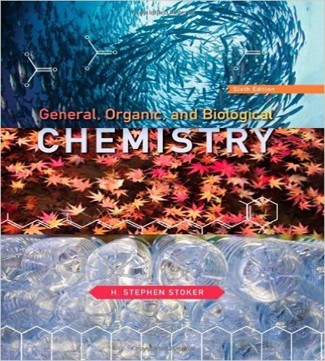
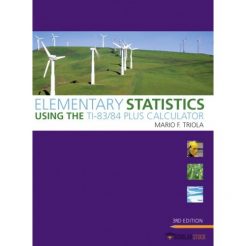
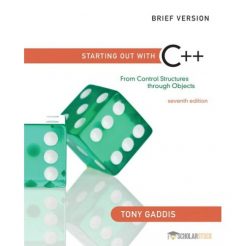
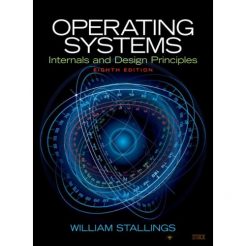
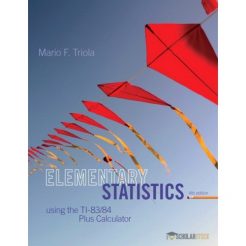

Reviews
There are no reviews yet.